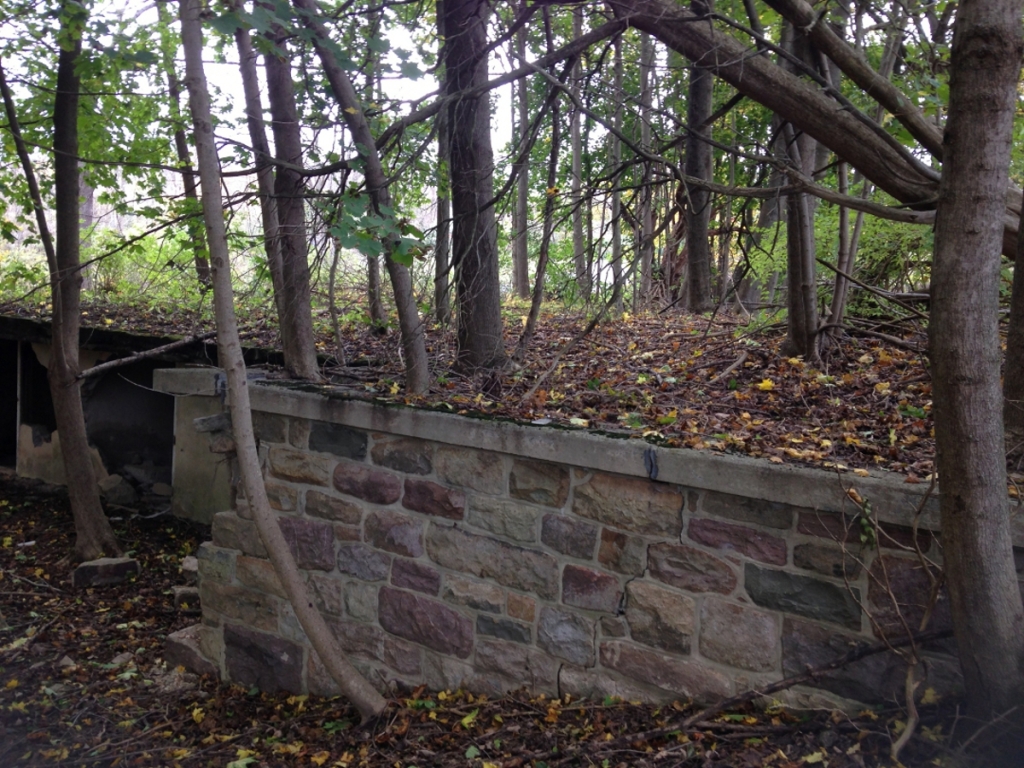Have you ever been walking through the woods and wondered who walked here before you? Setting aside the 16,000 years of prehistory in Pennsylvania, it is amazing to me how much our use of the land has changed during the last 350 years. Much of Penn’s Woods has gone from woods to farms to industrial tracts and back to woods. But all those activities have left traces on the land – some blatant, some subtle. Being an archaeologist by training, I look for those traces when I walk in the woods.
Some of my favorite places to hike or bike are on the vast system of rail trails in PA. These trails are, in and of themselves, remnants of an industrial past. Along them, you find many indications of the infrastructure that was necessary to support a railroad or canal. Everything from massive stone bridge abutments, to coal tipples, to watering ponds, to lock walls, and even mile markers can still be seen.
The vast lumber, oil and gas, and iron industries of the 19th century have all left their marks. Often they are seen in the criss-cross patterns of old roads and log skids, or in the remnants of saw mills and mill ponds, pump jacks, or furnace stacks standing alone along the trail.
In the area where I grew up, most of our hiking trails were old logging roads. Along one I remember exploring a tumbled pile of cut stones that were the remnant of an iron furnace. Not far from it were several small flat areas, cut back into the hillside in a line and spread throughout the woods were a few large round areas that had very black soil where nothing grew. Years later, when I knew what to look for, I went back to that area and was able to locate the charcoal house remnants; the water dam, race, and wheel pit; slag piles; and depressions that were probably the workers houses. I recognized those flat places along the hillside as ore benches (shallow diggings for ore that was near the surface) and the black areas as charcoal making platforms. I traced the roads that brought these materials to the furnace. All these things were still visible from a furnace that was only in blast for 9 years, more than 150 years ago, in an area that has since been lumbered, farmed, burned over, and used for recreation!
Traces of domestic locations always make me wonder about the people who lived there and why they were abandoned. Many places in the woods you will see stone lined depression that were once cellars, stone fence rows, and dumps of domestic debris that are obvious indicators that someone lived there in the recent past. Some of them represent whole towns!
But there are several other hints that a house or farm was once present that are not as obvious. Have you ever noticed apple trees in the woods? They were not native, and what you are seeing is the remnant of an orchard or farm. The same is true for other non-native species such as cedar, arborvitae, lilacs, yucca, daffodils, creeping myrtle, ivy, and iris – all of which dot our woods now in the vicinity of old farmsteads. Unusual level places that break up a rolling terrain or abrupt changes in vegetation can also indicate human activity.
One farmstead I have excavated was initially indicated by a cut in the hillside on one side of an old road trace (the barn), a slight depression on the other side of the road that had cut stones and coal cinders near it (the house cellar), a scrawny lilac bush near a spring, and 5 apple trees. Historic research and excavation determined that it was a farm that was occupied from the 1880s to the 1920s. It was probably abandoned after a major fire burned off most of the mountainside. Toys found in the excavations indicated that at least one boy (trains and marbles) and one girl (dolls) probably lived there. The cinders indicated a coal stove. All the kitchen wares were found near the cinders and much of the window glass and the toys were found on the other side of the cellar hole, so we can even guess at the layout of the house.
So look around while you follow old roads through Penn’s Woods this autumn and think of those who lived and worked there before you came.
